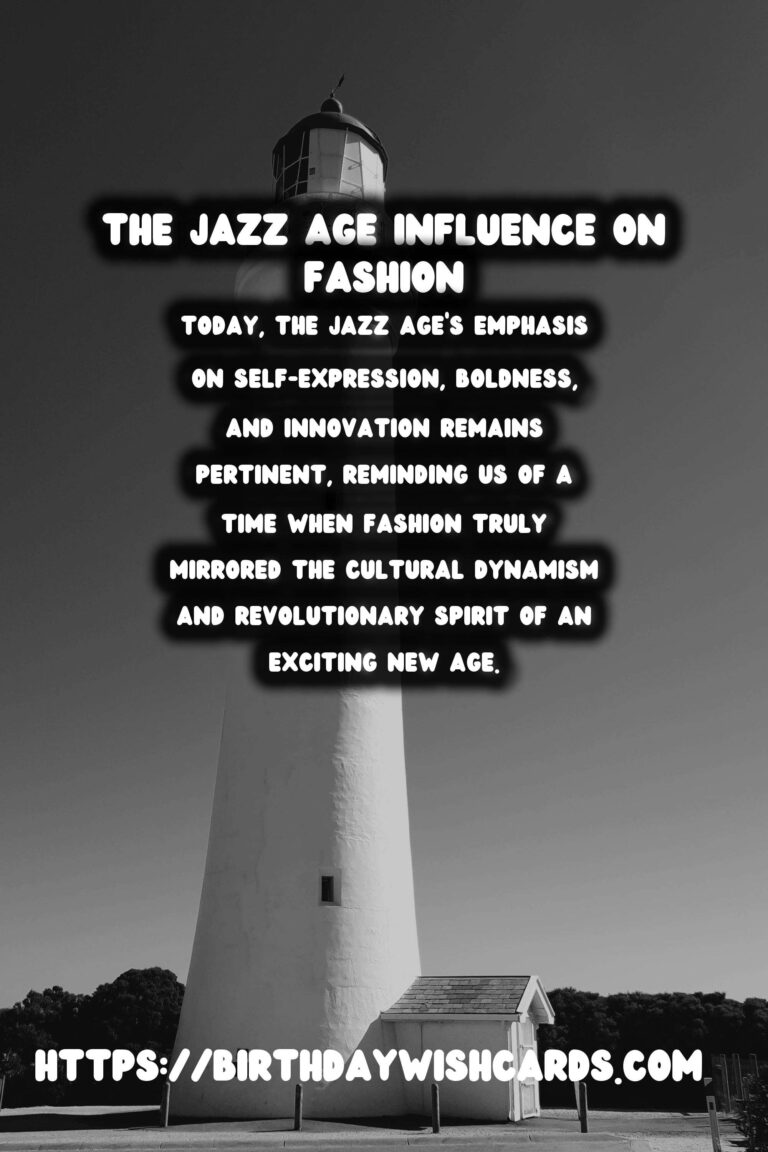
The Jazz Age, an era that spanned from the end of World War I into the early 1930s, was a period characterized by a cultural transformation in music, art, and fashion. This dynamic era was marked by economic prosperity, technological advancements, and cultural shifts that transformed America in numerous ways. Chief among these shifts was the revolutionary impact on fashion, which continues to influence our sartorial choices to this day.
The Jazz Age was synonymous with the Roaring Twenties, a time when jazz music took center stage, influencing the nightlife, attitudes, and spirits of an entire generation. This evolving culture affected every aspect of daily life, especially fashion, which saw a move away from the restrictive styles of previous decades to more relaxed and expressive designs.
The Birth of a New Fashion Era
The Jazz Age prompted an evolution in women’s fashion that signaled freedom and liberation. The corsets and multi-layered garments of the Edwardian era quickly became obsolete as women embraced new styles that emphasized comfort and mobility. The flapper dress, with its loose silhouette, knee-length hemlines, and decadent embellishments, became the emblem of the decade.
This era’s fashion revolution was not just about women’s wear but also included significant changes in men’s fashion. Men embraced more relaxed, tailored suits, often coupled with stylish hats, which became an essential accessory. This shift towards more informal clothing reflected the era’s evolving social norms and values.
Influence of Jazz Music on Fashion
Jazz music was more than just a genre; it was a lifestyle that dictated the rhythm of fashion. The vibrant and spontaneous essence of jazz mirrored the boldness seen in the fashion of the time. Designers drew inspiration from music, incorporating elements such as geometric patterns and bold colors, which were reminiscent of the syncopation and improvisation found in jazz.
Dances like the Charleston and the Lindy Hop required clothing that allowed for movement. This necessity led to the rise of garments such as pleated skirts and trousers, and enabled both men and women to participate in these joyous expressions of the era’s ethos.
The Flapper Phenomenon and Beyond
The term ‘flapper’ became synonymous with the liberated women of the Jazz Age who defied traditional norms and conventions. These women cropped their hair into bobs, wore makeup, and donned dresses adorned with fringe and sequins, reflecting their vibrant personalities and the lively music that defined the decade.
Driving this style, icons like Zelda Fitzgerald and Clara Bow epitomized the flapper look. Their influence spread far and wide, marking a significant shift in cultural attitudes towards gender roles, freedom, and femininity.
African American Influence and the Harlem Renaissance
The Harlem Renaissance, a significant cultural and artistic movement within the Jazz Age, saw African American art, music, and literature gain unprecedented attention. This movement greatly influenced fashion as well, with Harlem becoming a hub where new styles and artistic expressions flourished.
Designers were inspired by the vibrant street styles and innovative designs emerging from African American communities. This cross-cultural exchange enriched the fashion of the time, bringing new textures, patterns, and cuts into mainstream fashion circles.
Lasting Legacy of Jazz Age Fashion
The Jazz Age’s impact on fashion did not end with the Great Depression. Its legacy continues to permeate contemporary fashion trends, with designers often evoking the spirit of the 1920s in their collections. Elements such as drop waists, fringe details, and art deco motifs are recurrent in modern design, demonstrating how this era’s distinctive style continues to inspire.
Today, the Jazz Age’s emphasis on self-expression, boldness, and innovation remains pertinent, reminding us of a time when fashion truly mirrored the cultural dynamism and revolutionary spirit of an exciting new age.
In conclusion, the Jazz Age ushered in a fashion revolution that departed from formality and moved towards expression and comfort. Its influence helped shape 20th-century fashion and continues to be a source of inspiration, celebrating a period when change was not just expected but embraced.
The Jazz Age was synonymous with the Roaring Twenties, a time when jazz music took center stage, influencing the nightlife, attitudes, and spirits of an entire generation. Today, the Jazz Age’s emphasis on self-expression, boldness, and innovation remains pertinent, reminding us of a time when fashion truly mirrored the cultural dynamism and revolutionary spirit of an exciting new age. 
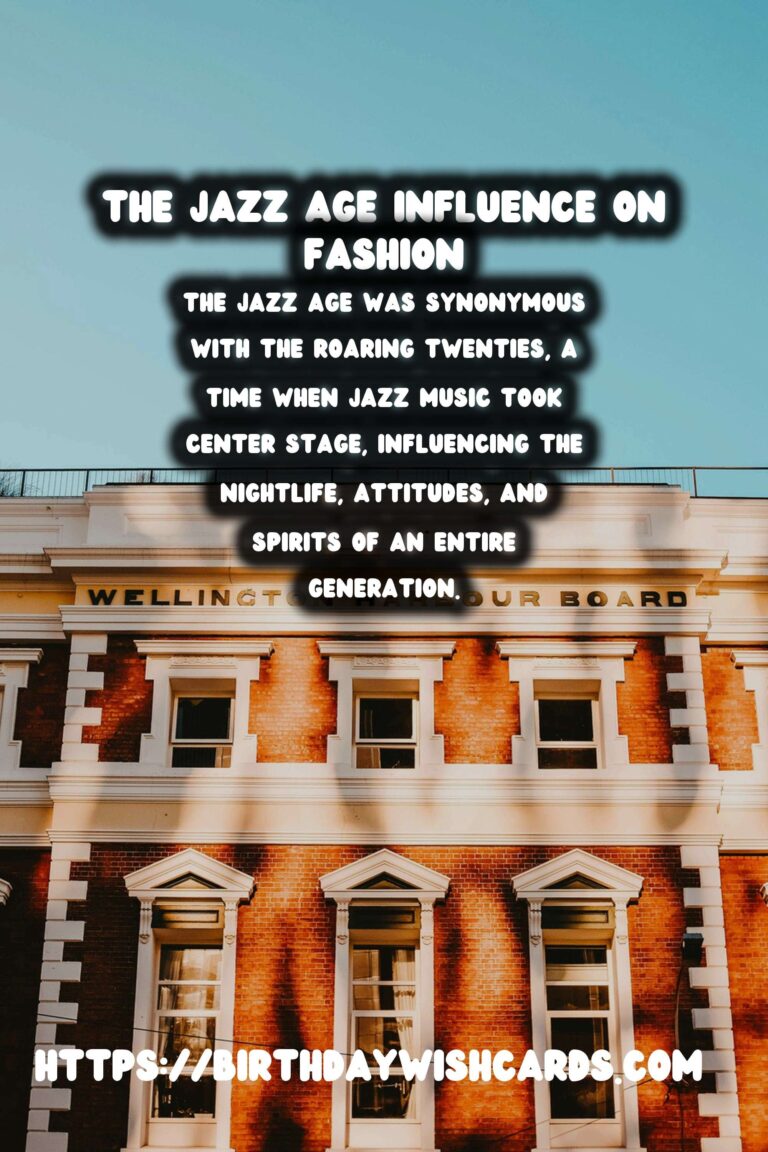
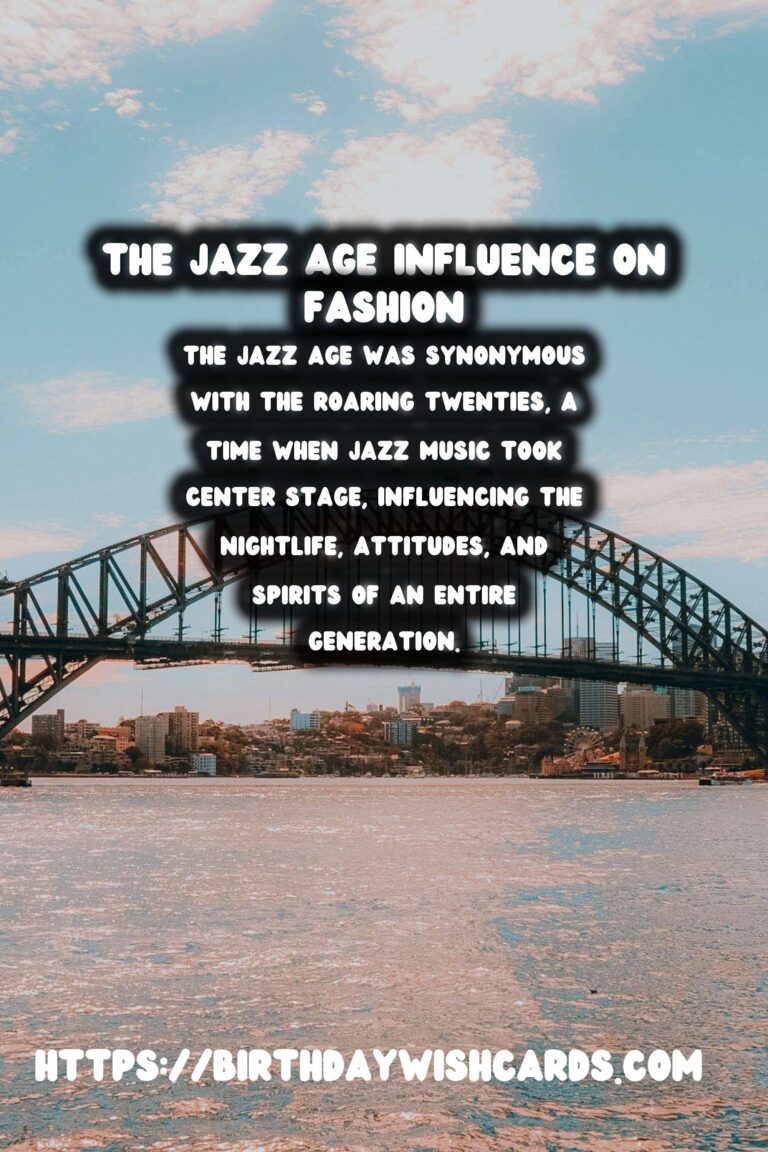
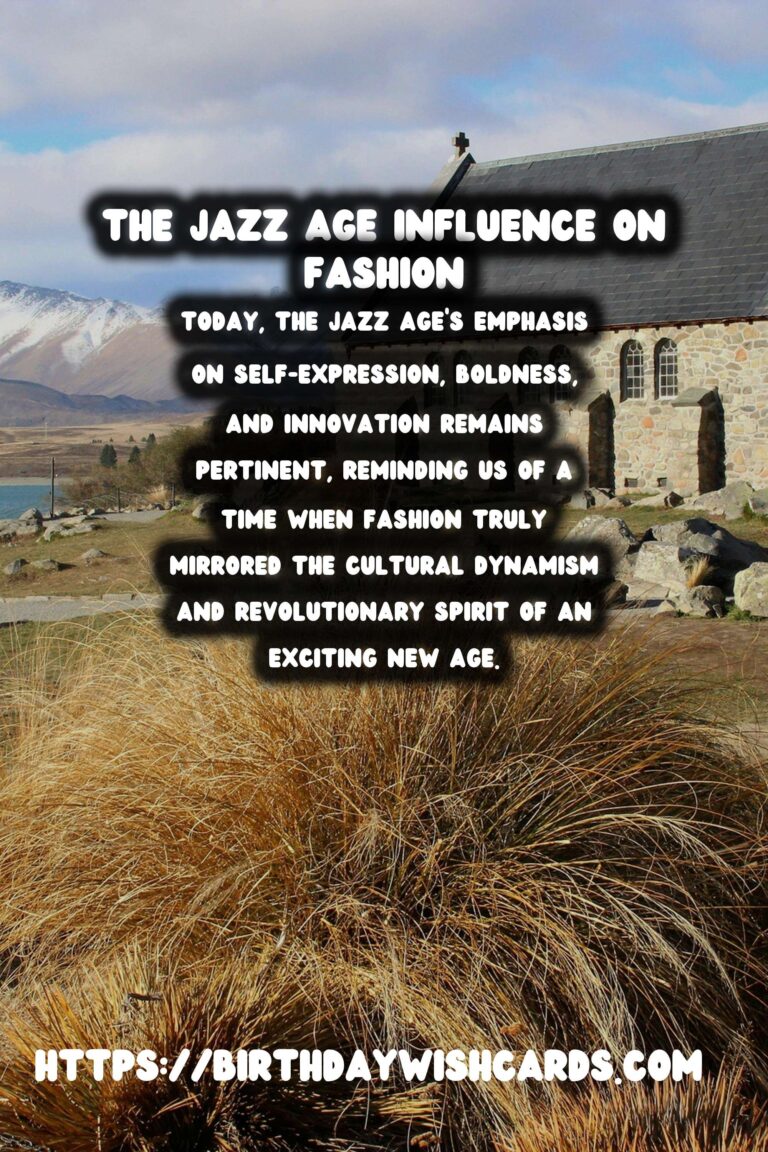
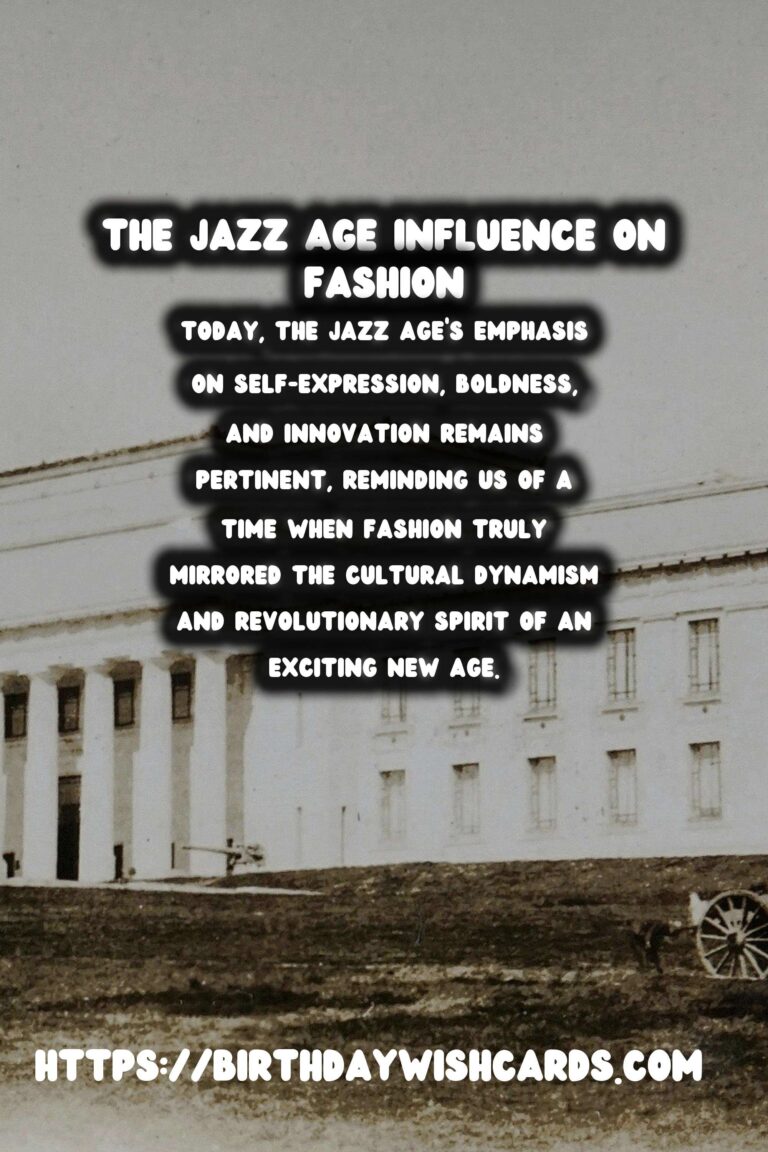
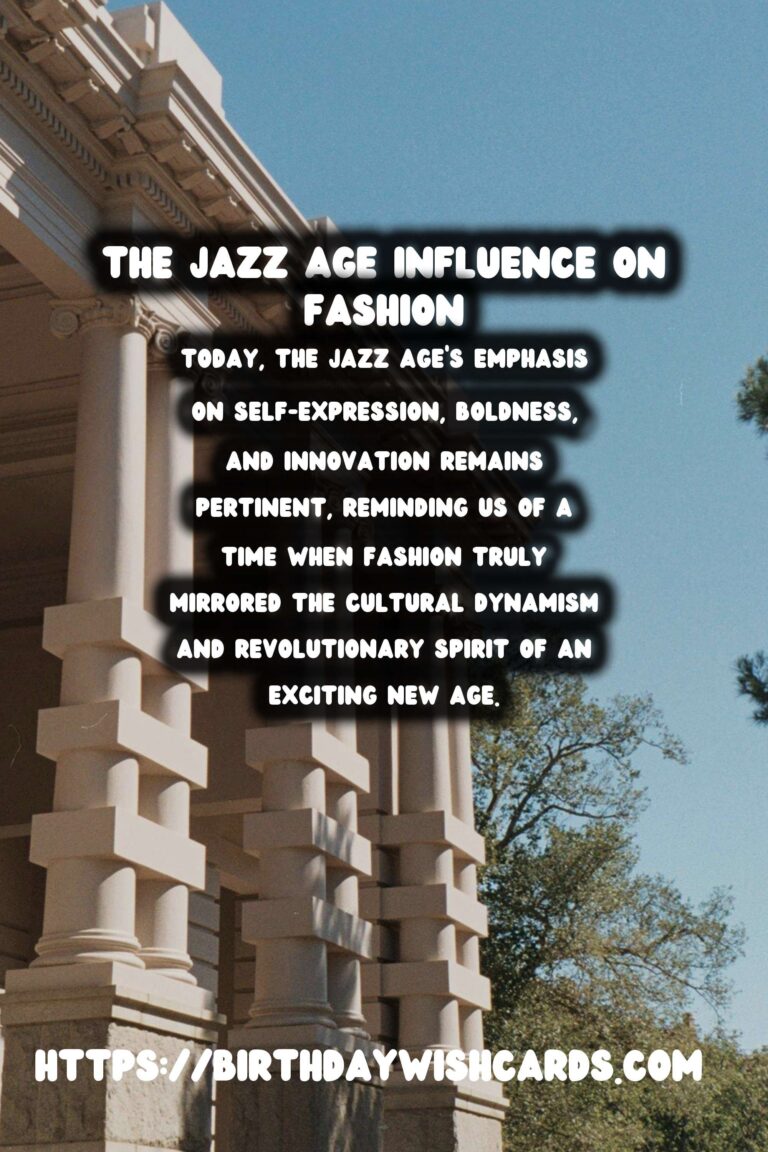
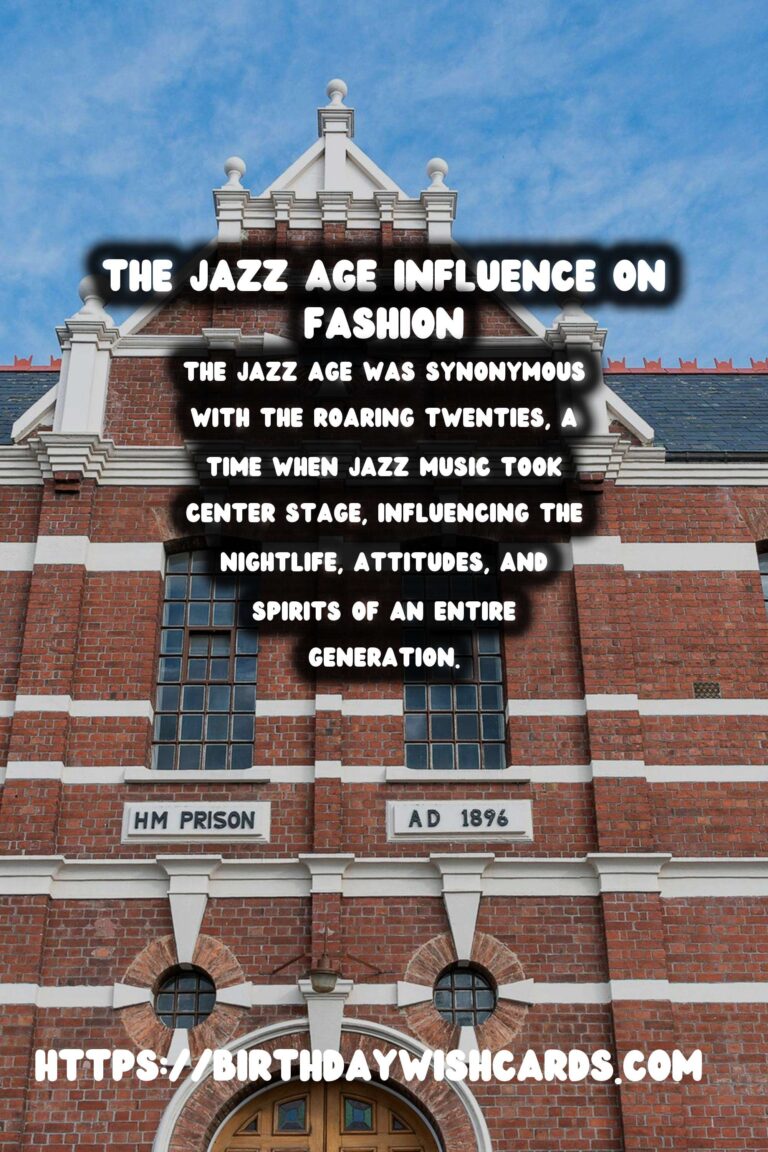
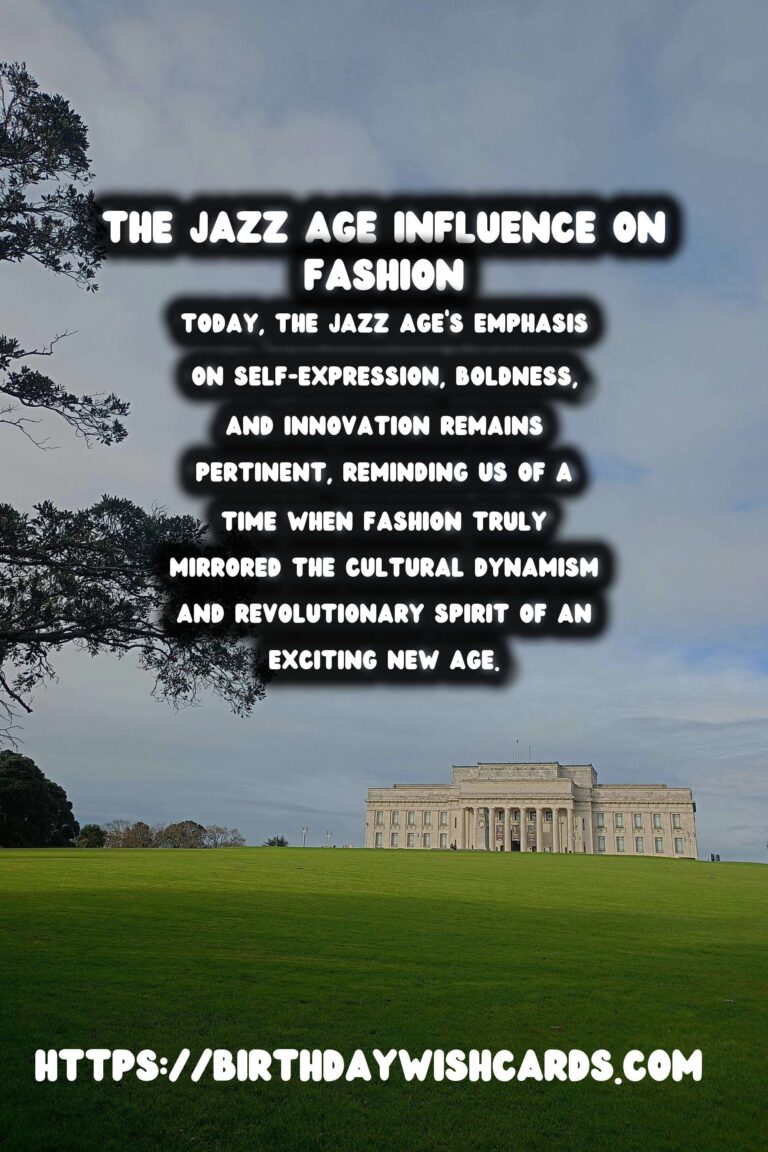
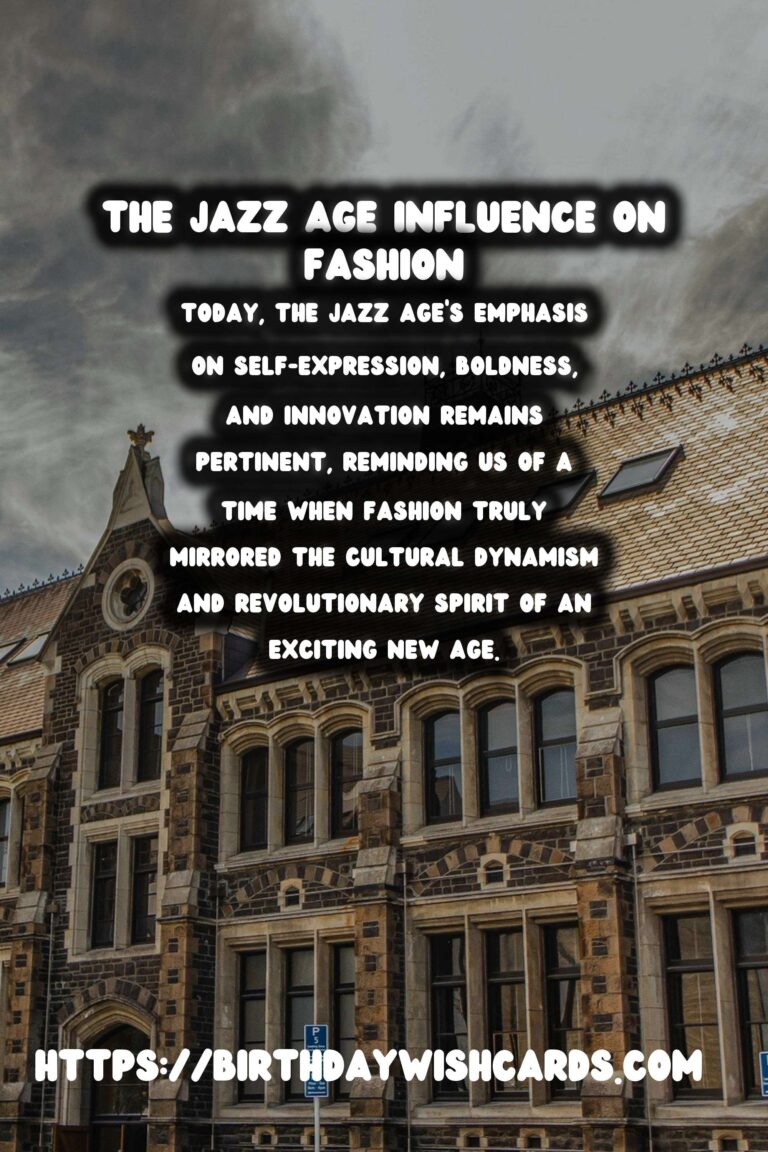
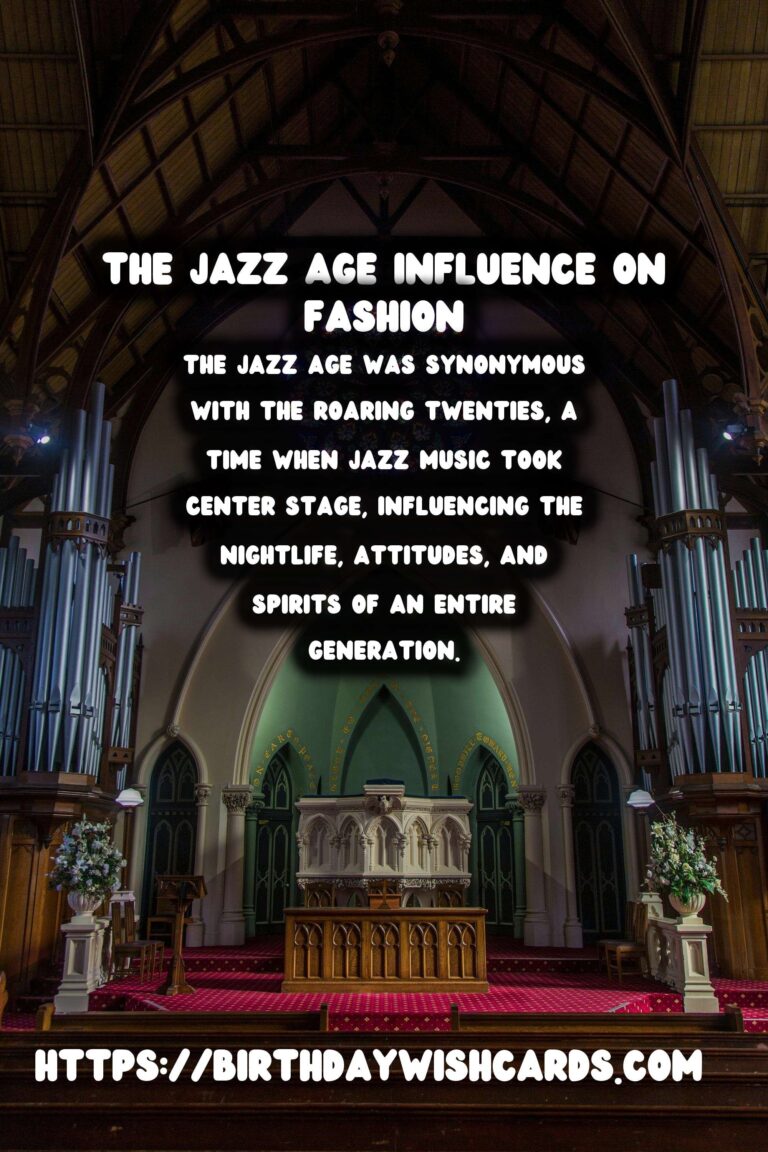
#JazzAge #AmericanFashion



